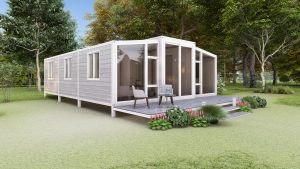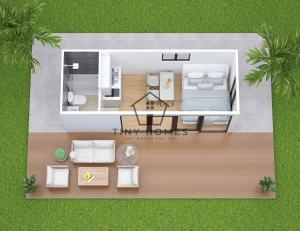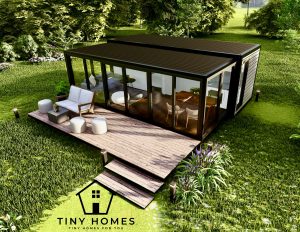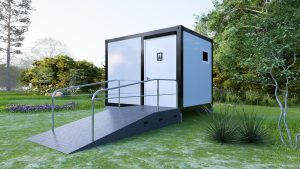Tiny houses are much more than just a current trend, they represent a shift in how many Australians view homeownership, lifestyle, and sustainability. As cities become more expensive and environmental concerns grow, tiny houses for sale have gained immense popularity across Australia. Whether you’re exploring the possibility of buying a tiny house or you’re a builder looking to create and sell these compact homes, understanding what to look for is essential for success.
What Exactly Are Tiny Houses and Why Are They Gaining Popularity?
Tiny houses are generally defined as homes smaller than 40 square metres (around 400 square feet). Their size forces creative solutions to make living spaces feel functional and comfortable despite their compact footprint. While tiny houses can come in many forms, from stationary homes on foundations to portable tiny houses on trailers, they all share an emphasis on efficient use of space and minimalism.
The global tiny house market is booming. According to industry reports, the global tiny homes market is expected to expand at a compound annual growth rate (CAGR) of 7.8% through 2030. Australia is no exception, with rising property prices, increased environmental awareness, and a cultural shift towards simpler living driving demand.

Reasons for the surge in popularity include:
• Financial Freedom: Lower construction costs and reduced utility bills make tiny houses more affordable than traditional homes.
• Environmental Responsibility: Smaller homes mean less energy consumption and fewer resources used.
• Mobility: Some tiny homes on wheels allow homeowners to travel without giving up their dwelling.
• Simplified Lifestyle: Living in a tiny home encourages decluttering and prioritising what matters most.
This growing movement appeals to a wide audience, from retirees downsizing to millennials seeking affordable housing options, and even families wanting to live closer together in a smaller space.
What to Consider Before Buying or Building Tiny Houses for Sale
Understanding Local Zoning and Building Codes

One of the biggest hurdles for tiny house owners and builders is navigating local council regulations. While some councils have embraced tiny houses and created guidelines, others have strict minimum dwelling size requirements or prohibit tiny houses on wheels as permanent residences.
• Minimum Size Requirements: Many Australian councils have minimum floor area standards (often around 50 to 70 square metres), which tiny houses may not meet.
• Permits and Approvals: You may need planning permission, building permits, or compliance certificates depending on your location and the tiny house design.
• Temporary vs Permanent Residence: Mobile tiny houses are sometimes classified as caravans or temporary structures, affecting where and how long they can be lived in.
It’s crucial to research zoning rules early to avoid costly redesigns or legal issues down the track.
Choosing the Right Size and Layout
Tiny houses are compact, but not one-size-fits-all. The layout should match your lifestyle and priorities. Key considerations include:
• Number of occupants: A tiny house for a single person looks very different from one designed for a couple or small family.
• Storage needs: Incorporate vertical storage, under-floor compartments, and multi-purpose furniture to maximise space.
• Sleeping arrangements: Loft beds are popular but require climbing ladders, which may not suit everyone.
• Work-from-home setup: Many tiny house owners now want dedicated office space, which means clever zoning of interior areas.
Quality of Construction and Materials

Because tiny houses are small, any construction flaw or material failure is magnified. High-quality builds use durable, lightweight materials that can withstand Australian climate conditions. Features to look for include:
• Weatherproof cladding and roofing
• Efficient insulation for temperature regulation
• High-quality windows and doors to prevent drafts
• Sustainable and non-toxic building materials that contribute to indoor air quality
Investing in superior craftsmanship can boost resale value and reduce future maintenance costs.
Utilities and Sustainability Features

One appeal of tiny houses is the opportunity for off-grid living. However, integrating plumbing, electricity, and heating into such a small space requires careful planning. Options include:
• Solar power systems combined with battery storage
• Rainwater harvesting and filtration systems
• Composting or eco-friendly toilets
• Energy-efficient appliances and LED lighting
Sustainability features can reduce environmental impact and appeal to eco-conscious buyers, but they may add to upfront costs and complexity.
Mobility Considerations for Tiny Houses on Wheels
Tiny houses on trailers offer freedom to move but come with specific challenges:
• Weight limits must be observed to ensure safe towing.
• The house must meet road safety standards and regulations.
• Setup time varies depending on utility hookups and stabilisation.
A mobile tiny house is perfect for travellers or those who want flexibility, but it is less suitable for permanent settlement without a designated site.
The Benefits of Investing in Tiny Houses for Sale
As housing prices continue to rise across Australia, more buyers are turning to tiny houses 4U for sale as a smart, future-proof investment. These compact dwellings offer more than just affordability, they provide flexibility, sustainability, and lifestyle freedom that traditional homes often can’t match. Whether you’re purchasing your first home, investing in a rental property, or embracing a minimalist lifestyle, tiny homes present a unique opportunity to get more value with less space. Plus, with growing interest in eco-conscious and mobile living, demand for tiny houses is expected to keep rising.
Financial Benefits
Tiny houses often cost 50–80% less than traditional homes to build or buy, making them accessible to first-home buyers or investors. Lower ongoing costs for utilities and maintenance further improve affordability.
Environmental Impact
Living tiny reduces your carbon footprint dramatically. The energy needed for heating, cooling, and lighting is lower, and many tiny houses incorporate green technologies.
Lifestyle Advantages
The minimalist lifestyle promoted by tiny house living encourages mindfulness, simplicity, and prioritising experiences over possessions. Many owners report feeling less stressed and more connected to their surroundings.
Market Growth Potential
With property prices rising, tiny houses represent an innovative solution to Australia’s housing affordability crisis. Builders who understand this market stand to benefit from increasing demand.
Pricing Your Tiny House: What to Expect
Pricing depends on size, materials, features, and location. Tiny houses in Australia typically range from $60,000 for basic models to over $150,000 for fully customised homes with green tech.
Builders must balance cost-saving with quality to meet buyer expectations and achieve good returns.
If you’re curious about tiny houses for sale in in Australia, explore options tailored to your needs. Visit Tiny Homes 4U see a range of models that balance innovation with comfort. For more inspiration, reach out to us directly via our contact page we’re here to answer your questions and help turn your tiny living dream into reality.

